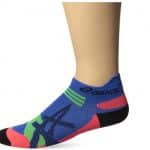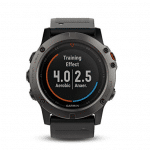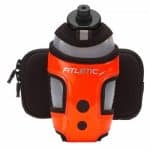
Welcome to our comprehensive guide on Running for Beginners! Budding runners can look forward to the many advantages of this sport, as long as they receive adequate instruction and support.
In this post, we will cover everything from getting started and obtaining medical clearance to understanding the various types of running and training methods. We’ll also delve into essential topics such as nutrition, hydration, proper gear selection, and how running can become a lifelong hobby.
Our Running for Beginners guide is here to provide aid with the journey, no matter if your objective is weight reduction or health enhancement. So lace up those shoes and let’s get started!
Quick Navigation
Table of Contents:
- Getting Started
1. Getting Started
Congrats on taking the initial step towards a healthier and more active lifestyle by running. Running is a splendid physical activity that can be appreciated by individuals of any age and wellness level. In this section, we’ll cover the basics of getting started with running, including what you need and how to find a good route.
Finding Your Ideal Route
One of the best things about running is that you can do it almost anywhere or in your neighborhood, at a local park, or even on vacation. When choosing a route for your run, consider factors such as safety (well-lit areas with low traffic), terrain (flat vs hilly), scenery (a beautiful view can make your run more enjoyable), and distance (start small and gradually increase). You can use websites like MapMyRun or apps like Strava to discover popular routes near you.
Gearing Up for Success
You don’t need much equipment to start running; however, investing in some essential gear will help ensure comfort and prevent injuries:
- Running shoes: A good pair of running-specific shoes provides cushioning, support, and stability tailored for runners’ needs. Visit a specialty store where staff members are trained in fitting customers properly based on their foot type
 and gait.
and gait. - Clothing: Choose moisture-wicking fabrics that keep sweat away from your skin while providing breathability during runs. This includes shorts or leggings/tights depending on weather conditions along with lightweight tops suitable for the season.
- Socks: Running-specific socks can help prevent blisters and provide extra cushioning for your feet. Look for materials like synthetic blends or merino wool that wick moisture away from your skin.
Setting Realistic Goals
Set a goal of completing a 5K race (3.1 miles) that allows for gradual progress and reduced risk of injury, such as with the Couch to 5K app. A common beginner goal is completing a 5K race (3.1 miles), which allows you to build endurance gradually without overexertion. You can use apps like Couch to 5K, which provides structured training plans designed specifically for beginners, helping you progress at a safe pace while minimizing the risk of injury.
Remember, consistency is key when building up your running habit – start slow and be patient with yourself as you work towards achieving your goals.
To commence running, make sure to equip yourself with the necessary gear and ensure your body is primed for the exercise. Now that you are prepared, let’s move on to getting medical clearance before starting a running program.
Key Takeaway: As an advanced level professional, I would summarize the above by saying that running is a great way to get active and stay healthy. To get started with running, it’s important to choose a safe route tailored to your fitness level and invest in some essential gear such as good shoes and moisture-wicking clothing. Setting realistic goals like completing a 5K race will help you build up endurance at a comfortable pace without overexerting yourself.
2. Medical Clearance
Before you start your running journey, it’s essential to ensure that you’re in good health and ready for the physical demands of this activity. If you have any pre-existing medical conditions or concerns about your ability to run safely, obtaining medical clearance from a healthcare professional is crucial.

Sports health check-ups can help identify potential risks and provide guidance on how to proceed with your training plan. A comprehensive examination of your medical records, including such elements as blood pressure readings and pulse rate observations, can be carried out during a sports health assessment.
Potential Health Concerns for Runners:
- Asthma: Running can sometimes trigger asthma symptoms; consult with a doctor before starting if you have asthma or suspect that you might.
- Joints & Muscles: Those who suffer from joint pain or muscle issues should discuss appropriate exercises and precautions with their healthcare provider.
- Pregnancy:If pregnant, always talk to an obstetrician about safe exercise options during pregnancy – some modifications may be necessary depending on individual circumstances.
- Certain Heart Conditions:Risks associated with high-intensity activities like running need careful consideration for individuals diagnosed with specific heart problems – seek advice from a cardiologist beforehand.
In addition to addressing these concerns, it’s also important not to ignore any new symptoms while running. Should something feel off during or after a run (e.g., chest pain, dizziness), don’t hesitate to reach out to your healthcare provider immediately.
Once you have the go-ahead from your doctor, commence your running journey with a slow and steady approach. Remember that starting slow and gradually increasing your distance and intensity is key for a safe and successful running journey.
It is important to obtain medical clearance before beginning a running program, as it can help identify any potential risks or underlying health issues. The next heading will discuss the benefits of running for beginners and how this exercise can improve overall physical fitness.
Key Takeaway: You should always get medical clearance from your healthcare provider before starting any running journey. This is especially true if you have pre-existing medical conditions or joint muscle issues. Remember to start slowly and gradually build your distance and intensity for the safest possible running experience.
3. Benefits of Running
Running is a beneficial form of exercise, providing both physical and mental advantages for people at any level of fitness. From improved cardiovascular health to stress relief, running can be a transformative activity for both your body and mind.
Physical Benefits
 Improved Cardiovascular Health: Regular running helps strengthen the heart, allowing it to pump blood more efficiently throughout the body. This reduces the risk of heart disease and lowers blood pressure. According to the National Institutes of Health, regular aerobic exercise like running can lower your risk for coronary artery disease by up to 40%.
Improved Cardiovascular Health: Regular running helps strengthen the heart, allowing it to pump blood more efficiently throughout the body. This reduces the risk of heart disease and lowers blood pressure. According to the National Institutes of Health, regular aerobic exercise like running can lower your risk for coronary artery disease by up to 40%.- Muscle Strength & Endurance: Running engages various muscle groups in your legs, core, and upper body, leading to increased strength and endurance over time.
- Bone Density: Weight-bearing exercises such as running help maintain or even increase bone density as you age, reducing the risk of osteoporosis later in life. A study published in the journal Medicine & Science in Sports & Exercise found that lifelong runners had significantly higher bone mineral density than sedentary individuals.
- Fat Burning & Weight Management: As an effective calorie-burning workout, running can help with weight loss or maintenance when combined with a healthy diet.
Mental Benefits
- Stress Relief: Running releases endorphins, which are natural mood elevators that can help alleviate stress and anxiety. A study from the Journal of Neuroscience found that running can even have an antidepressant effect in some individuals.
- Mental Clarity &
 Focus: Many runners report experiencing a “runner’s high,” or a sense of mental clarity and focus during and after their runs. This phenomenon is believed to be due to increased blood flow to the brain, as well as the release of feel-good chemicals like endorphins.
Focus: Many runners report experiencing a “runner’s high,” or a sense of mental clarity and focus during and after their runs. This phenomenon is believed to be due to increased blood flow to the brain, as well as the release of feel-good chemicals like endorphins. - Social Connection: Joining a local running group or participating in races provides opportunities for social interaction with other fitness enthusiasts who share your passion for running.
- Increase Self-Esteem & Confidence: Setting and achieving personal goals through running can boost self-esteem and confidence levels, leading to positive effects on other areas of life.
Taking advantage of these benefits is easy when you make running part of your regular routine. Whether you’re looking for improved physical health or seeking mental balance, incorporating this versatile form of exercise into your lifestyle can lead to significant improvements in overall wellbeing.
The benefits of running are numerous, from improved physical and mental health to increased energy levels. Next, let’s investigate how jogging can help you slim down.
Key Takeaway: Running is a great way to get fit both physically and mentally. It helps improve cardiovascular health, muscle strength and endurance, bone density, fat burningweight management as well as reducing stress levels. Furthermore it can increase self-esteem and confidence due to achieving goals set by the individual – making running an all round beneficial activity.
4. Running for Weight Loss
 If you’re looking to shed some pounds, running can be an effective and enjoyable way to achieve your weight loss goals. Running not only helps to burn calories, but also increases lean muscle mass which in turn boosts metabolism and facilitates fat burning during rest.
If you’re looking to shed some pounds, running can be an effective and enjoyable way to achieve your weight loss goals. Running not only helps to burn calories, but also increases lean muscle mass which in turn boosts metabolism and facilitates fat burning during rest.
A. Calories Burned While Running
The number of calories burned during a run depends on various factors such as your weight, pace, and distance covered. On average, a person weighing 150 pounds can burn approximately 100 calories per mile while running at a moderate pace. Increasing your speed and distance will result in burning more calories.
- Moderate Pace: A 30-minute run at a moderate pace (5 mph) burns around 300-400 calories.
- Vigorous Pace: A high-intensity sprint session lasting just ten minutes could help you torch up to 200 calories.
B. Creating a Calorie Deficit
In order to shed pounds with running or any other type of physical activity, it’s imperative to establish a calorie deficit by burning more energy than is taken in through nourishment on a daily basis. For safe and sustainable weight loss results, aim for losing one pound per week , which equates to cutting about 500-750 extra daily kcal from dieting alone or combining with physical activity like running.

C. Incorporating Different Types of Runs
Varying your running workouts can help you burn more calories and prevent boredom. Incorporate different types of runs into your routine, such as:
- Interval Training: Alternating between high-intensity sprints and low-intensity recovery periods increases calorie burn during the workout and even after it’s over.
- Hill Running: Running uphill challenges your muscles, leading to a higher calorie expenditure compared to running on flat surfaces.
D. Pairing Running with Strength Training
To maximize weight loss results, consider incorporating strength training exercises alongside your running routine. Building muscle mass not only helps improve overall fitness but also boosts metabolism, allowing you to burn more calories throughout the day. Learn how to combine strength training and running effectively here.
E. Monitoring Your Progress
Keeping track of your progress is crucial for staying motivated in achieving weight loss goals through running. Consider using apps or wearable devices that monitor distance covered, pace, heart rate, and calories burned during each run session. Check out some top-rated GPS watches for runners here.
Utilizing these tactics can help you attain your weight loss goals while taking pleasure in the other advantages of being an enthusiastic runner.
Closing Sentence: Running for weight loss can be an effective way to reach your goals, as long as you stay consistent and focus on proper nutrition. Transition Sentence: Moving forward, let’s discuss the benefits of running for general health.
Key Takeaway: Jogging can be a great way to torch calories, bulk up muscles, and accomplish desired weight-loss goals while having fun. By creating a calorie deficit through dieting or physical activity such as running combined with strength training exercises and monitoring progress with GPS watches, you can reach your desired results while reaping the benefits of being an avid runner.
5. Running for General Health
By running regularly, you can not only slim down but also gain various health benefits that promote general wellbeing. By incorporating running into your weekly routine, you’ll be able to enjoy these advantages and live a healthier lifestyle.
A. Cardiovascular Health
Regular aerobic exercise like running helps strengthen the heart and improves circulation throughout the body. This results in lower blood pressure, reduced cholesterol levels, and decreased risk of developing heart disease or suffering from a stroke.
B. Mental Health Benefits
The mental health benefits of running are often overlooked but equally important as physical ones. The release of endorphins during exercise creates what’s known as “runner’s high,” which can help alleviate stress, anxiety, and depression while boosting mood and self-esteem.
C. Improved Sleep Quality & Energy Levels
- Sleep Quality: Regular runners tend to experience better sleep quality due to their bodies being more physically tired at night time.
- Energy Levels: Running increases energy levels by improving cardiovascular fitness and oxygen delivery throughout the body – meaning you’ll feel less fatigued during daily activities.
D. Strengthening Muscles & Joints
In addition to working out your legs’ muscles when logging miles on footpaths or trails, regular runs also engage other muscle groups, including your core and upper body. Regular running can help to develop general muscular strength, enhance equilibrium, and reduce the likelihood of harm in daily activities.
E. Boosting Immunity
Running can help boost your immune system, making you less susceptible to common illnesses like colds or flu. It’s essential not to overdo it, though – excessive exercise may have the opposite effect on immunity.

Incorporating running into your lifestyle is a fantastic way to enjoy these health benefits while also staying motivated by setting personal goals or joining a community of fellow runners. So lace up those running shoes and start reaping the rewards that come with this enjoyable form of exercise.
To enhance your physical and mental health, running can be an effective way to improve overall wellbeing. Exploring the various kinds of running which can be undertaken to begin your health journey is an excellent thought.
Key Takeaway: Jogging can be an incredible means of promoting physical and mental health, presenting a wealth of advantages such as enhanced heart performance, better sleep quality and augmented vigor. Additionally, it strengthens muscles and joints while boosting immunity – so grab your running shoes for some rewarding exercise.
6. Types of Running
Running can be adapted to suit various levels of fitness, objectives and tastes for a wide range of exercisers. For the experienced or beginner runner, this section will provide an overview of various running types.
Sprinting
Sprinting involves short bursts of high-intensity running at maximum speed for distances typically ranging from 100 meters to 400 meters. This type of running helps improve your overall speed and power while also providing an effective cardiovascular workout.
Jogging
Jogging is a type of running at a slower speed, enabling you to keep up an even tempo for longer spans. It’s ideal for those just starting out in running who wish to slowly increase their stamina over time. You can find tips on how to start jogging here.
Distance Running
This type encompasses runs covering long distances such as half-marathons (13.1 miles) or full marathons (26.2 miles). Distance runners focus on building stamina and endurance through consistent training sessions over several months leading up to race day.
Road Running vs Trail Running:
- Road Running: As the name suggests, road-running takes place primarily on paved surfaces like streets or sidewalks; it’s more accessible but may have higher impact on joints due to harder surfaces.
- Trail Running: On the other hand, trail running involves navigating off-road terrains like dirt paths, rocky trails, and uneven surfaces. It offers a more challenging workout that engages different muscle groups and provides a closer connection to nature.
Track Running
Track running takes place on specialized oval tracks usually found in schools or sports facilities. This type of running is ideal for those looking to improve their speed through interval training or time trials while enjoying the benefits of a controlled environment with accurate distance measurements.
Treadmill Running
Treadmill running allows you to run indoors at your convenience, making it an excellent option for those who live in areas with extreme weather conditions or  limited outdoor spaces. With adjustable speeds and inclines, treadmills offer versatile workouts that can be tailored to individual needs and goals.
limited outdoor spaces. With adjustable speeds and inclines, treadmills offer versatile workouts that can be tailored to individual needs and goals.
Incorporating various types of running into your routine not only keeps things interesting but also helps you develop well-rounded fitness by targeting different aspects of your physical abilities. Experimenting with these options will enable you to find what works best for you as you progress on your journey towards becoming an accomplished runner.
For those looking to maximize their running potential, varying the intensity of one’s runs from leisurely jogs to vigorous sprints can be beneficial. Now let’s look at some training methods that will help you improve your running performance.
Key Takeaway: This article offers an in-depth look into the different types of running, such as sprinting, jogging, road and trail distance running, track racing and treadmill training – all designed to help athletes progress towards their desired goals. Each type offers unique benefits to help runners progress in their fitness journey and reach their goals. It’s a breeze to select an activity that caters to your individual needs, from novices up to veteran runners.
7. Training Methods
As a novice, it is critical to be familiar with different training techniques that can help enhance your running abilities and stamina effectively. In this section, we will discuss some popular training techniques such as interval training, tempo runs, and using run/walk combinations.
Interval Training
Interval training is an excellent method for beginners to build up their stamina and speed gradually. It involves alternating between periods of high-intensity running followed by low-intensity recovery periods or walking. For starters, try alternating between 30 seconds of vigorous running and one minute of slower jogging or walking for recovery. Gradually increase the duration of the high-intensity intervals while reducing the recovery time as your fitness level improves.
This type of workout not only helps in improving cardiovascular health but also aids in burning more calories compared to steady-state running [source]. You can find several interval workouts designed specifically for beginners online.
Tempo Runs
Tempo runs,, also known as threshold runs, are another effective way to enhance your aerobic capacity and overall endurance levels quickly. These involve maintaining a comfortably hard pace (slightly faster than your normal easy run) for a specific duration or distance without stopping [source].
To ensure the correct intensity during a tempo run, gauge your effort level by assessing if you can comfortably speak in short sentences but not carry on a full conversation. As a beginner, start with shorter tempo runs (10-20 minutes) and gradually increase the duration as your fitness improves.
Run/Walk Combinations
For those who are new to running or coming back after an extended break, using run/walk combinations is an excellent way to ease into regular training without risking injury or burnout. This method involves alternating between periods of running and walking throughout your workout.
- The Galloway Method: Developed by Olympian Jeff Galloway, this approach suggests starting with a run/walk ratio that suits your current fitness level. For example, if you’re completely new to running, try jogging for 30 seconds followed by two minutes of walking and repeat until you complete your desired distance or time goal [source].
- Couch-to-5K Program: Another popular option for beginners is following a structured plan like Couch-to-5K (C25K). This nine-week program starts with mostly walking workouts and progressively increases the amount of running each week until participants can comfortably complete a 5-kilometer race.
Incorporating these training methods into your routine will help build endurance while minimizing injury risk. Remember always to listen to your body and adjust accordingly based on how it feels during each session.
To maximize running performance, it is essential to invest time in comprehending training methods. Moving on from training methods, proper nutrition and hydration are also key components for successful running.
Key Takeaway: This section outlines three essential training methods for beginners: interval training, tempo runs, and runwalk combinations. Interval training helps build up stamina and speed gradually while also burning more calories than steady-state running; tempo runs allow runners to maintain a comfortably hard pace without stopping; finally, the Couch-to-5K program is an excellent way to ease into regular running with mostly walking workouts before building up towards completing a 5k race.
8. Nutrition & Hydration
Prior to a run, it is imperative for runners – especially beginners – to ensure their bodies are properly nourished and hydrated in order to maximize performance.  To ensure optimal performance, it is important to consider proper nutrition and hydration before, during, and after a run.
To ensure optimal performance, it is important to consider proper nutrition and hydration before, during, and after a run.
Pre-Run Nutrition
Fueling up before a run is crucial for maintaining energy levels and preventing fatigue. Aim to consume a meal or snack that contains both carbohydrates and protein about 1-2 hours before your run. Some examples of pre-run meals include:
- A banana with peanut butter
- Oatmeal topped with berries and almonds
- A whole-grain toast with avocado and turkey slices
Runner’s World provides an extensive list of pre-run meal ideas, so you can find options that suit your taste buds.
Post-Run Nutrition
Your body needs proper nutrients to recover after a strenuous workout like running. Consuming a mix of carbohydrates, protein, and healthy fats within 30 minutes after completing your run can help replenish glycogen stores in muscles while promoting muscle repair.
Some post-run recovery food options include:
- Greek yogurt mixed with fruit and honey
- A smoothie made from spinach, frozen berries, almond milk, chia seeds, and protein powder
to help you optimize your recovery process.
Hydration Tips for Runners
Dehydration can have serious consequences for runners, including reduced performance, cramps, dizziness and even heatstroke; so it’s important to stay hydrated. Here are some tips on how to stay hydrated during your runs:
- Drink water throughout the day: Make sure you’re consuming enough water daily by following the general guideline of eight 8-ounce glasses per day.
- Sip on sports drinks or electrolyte-enhanced beverages: These can help replenish lost electrolytes through sweat during longer runs or workouts
 in hot weather.
in hot weather. - Carry a water bottle with you: If possible, bring a handheld water bottle or invest in a hydration belt so that you have access to fluids during your run.
ensuring optimal performance and safety.
Incorporating these nutrition and hydration guidelines into your running practice can have a beneficial effect on both your physical well-being and the capacity to keep up speed and strength. Always heed your body’s signals, as individual requirements for nutrients and hydration may differ based on age, weight, climate and exercise intensity.
Maintaining adequate nutrition and hydration are integral to any running plan, so it’s important to be aware of the fundamentals. Moving on, let’s look at some key gear for running that will help you get started in your journey as a runner.
Key Takeaway: To ensure optimal performance, it’s essential to consume the proper balance of carbohydrates, proteins and healthy fats before and after a run for experienced runners. It is essential to keep hydrated, consuming sufficient H2O over the course of the day and sports drinks or electrolyte-enriched fluids during extended runs in hot weather.
9. Gear for Running
Equipping yourself with the right gear is essential to ensure a comfortable and enjoyable running experience. This article will explore the different types of clothing and gear that can boost your running performance while helping to prevent injuries.
Running Shoes vs Regular Shoes
The importance of investing in proper running shoes cannot be overstated. Running shoes, unlike regular footwear, are engineered to provide enhanced support and cushioning for stability during running activities while mitigating the risk of injury from impact on different surfaces. They also help reduce the risk of injury by absorbing shock from each footstrike on different surfaces such as roads or trails.
Running Socks
A good pair of running socks can make a significant difference in comfort during your runs, as they are designed to absorb shock from footstrike and wick away  moisture. These socks are made from moisture-wicking materials that keep your feet dry while providing extra padding in high-impact areas like the heel and ball of the foot.
moisture. These socks are made from moisture-wicking materials that keep your feet dry while providing extra padding in high-impact areas like the heel and ball of the foot.
Pants or Shorts?
- Pants: Running pants offer full coverage for colder weather conditions while still allowing freedom of movement thanks to their stretchy fabric composition.
- Shorts: For warmer climates or indoor treadmill sessions, shorts provide breathability without compromising on comfort or mobility.
Tops: T-shirts & Long Sleeves
Selecting appropriate tops depends largely on personal preference as well as weather conditions: T-shirts are perfect for warmer days, while long-sleeved shirts provide extra coverage and warmth during colder months. Look for moisture-wicking materials to keep you dry and comfortable throughout your run.
Training Devices: GPS Monitors & Heart Rate Monitors
Incorporating training devices such as GPS monitors and heart rate monitors can help track your progress, set goals, and optimize your workouts. These tools offer  valuable insights into various aspects of your running performance like distance covered, pace, heart rate zones, and more.
valuable insights into various aspects of your running performance like distance covered, pace, heart rate zones, and more.
To sum up this section on gear for running: investing in the right shoes is crucial to prevent injuries; choose clothing based on personal preference and weather conditions; consider using training devices to enhance your performance. Happy shopping.
Having the right gear for running is essential to staying comfortable and motivated while out on a run. With some dedication, running can become a life long hobby that brings joy and fulfillment into your daily routine.
Key Takeaway: Running is essential to have the right gear for a comfortable and enjoyable experience. Investing in proper running shoes, socks, pantsshorts tops and training devices like GPS monitors or heart rate monitors will help optimize your performance while reducing injury risk. With the correct equipment you’ll be ready to hit the ground running.
10. Life Long Hobby
Making running a regular activity can provide long-term physical and mental benefits, allowing you to reach your goals. By making running a regular part of your routine, you are investing in both your physical and mental well-being for the long term.
Achieving Personal Goals
One of the most rewarding aspects of running as a lifelong hobby is setting and achieving personal goals. Accomplishing fresh objectives is a regular part of running, from competing in your initial 5K to preparing for an ultra-marathon. As you progress, you’ll find satisfaction in overcoming challenges and pushing yourself beyond what you thought was possible.
Social Connections
Running communities offer numerous opportunities to connect with like-minded individuals who share similar interests and passions. Joining local running clubs or participating in group runs allows you to make friends while staying active together. These connections often lead to lasting friendships that extend beyond the track or trail.
Mental Health Benefits
- Stress relief: Running helps release endorphins which act as natural mood elevators, reducing stress levels significantly over time.
- Anxiety reduction: Regular physical activity has been shown to help alleviate symptoms associated with anxiety disorders by promoting relaxation and improving overall mental health.
- Increase self-esteem: Achieving personal milestones through consistent effort boosts confidence levels leading to higher self-esteem.
The Joy Of Running In Nature
Taking up running as a lifelong hobby also provides you with the opportunity to explore and appreciate nature. Whether it’s running through a beautiful park, along a scenic coastline, or on picturesque mountain trails, immersing yourself in natural surroundings can be both invigorating and therapeutic. Moreover, studies have shown that exercising outdoors offers additional mental health benefits compared to indoor workouts.
Aging Gracefully
Staying physically active as one gets older is vital for preserving overall wellbeing. Running helps maintain muscle mass, bone density, and cardiovascular health – all of which are essential for healthy aging. In fact, research has demonstrated that older runners can continue to improve their fitness levels by staying consistent with their training routines.
Incorporating running into your life as a long-term hobby not only keeps you physically fit but also fosters personal growth and connections with others who share your passion. So lace up those shoes and hit the pavement – there’s no better time than now to start enjoying the countless rewards of this incredible sport.
Key Takeaway: Running is a great lifelong hobby that can help you achieve personal goals, make social connections, and improve mental health. From stress relief to boosting self-esteem, there are countless benefits to getting out on the track or trail – plus it’s never too late in life to reap the rewards of running.
Conclusion
Running for beginners can be a great way to start your journey towards better health and fitness. With the right knowledge, gear, training methods and motivation you will find that running is an activity that can provide life long rewards. Whether it’s weight loss or general health benefits, running has something to offer everyone – so why not give it a try?
If you’re a beginner looking to get into running, let us help guide you through the basics and provide resources that will help ensure your success. Start your journey today by exploring our comprehensive range of running solutions

 and gait.
and gait. Focus: Many runners report experiencing a “runner’s high,” or a sense of mental clarity and focus during and after their runs. This phenomenon is believed to be due to increased blood flow to the brain, as well as the release of feel-good chemicals like endorphins.
Focus: Many runners report experiencing a “runner’s high,” or a sense of mental clarity and focus during and after their runs. This phenomenon is believed to be due to increased blood flow to the brain, as well as the release of feel-good chemicals like endorphins. in hot weather.
in hot weather.